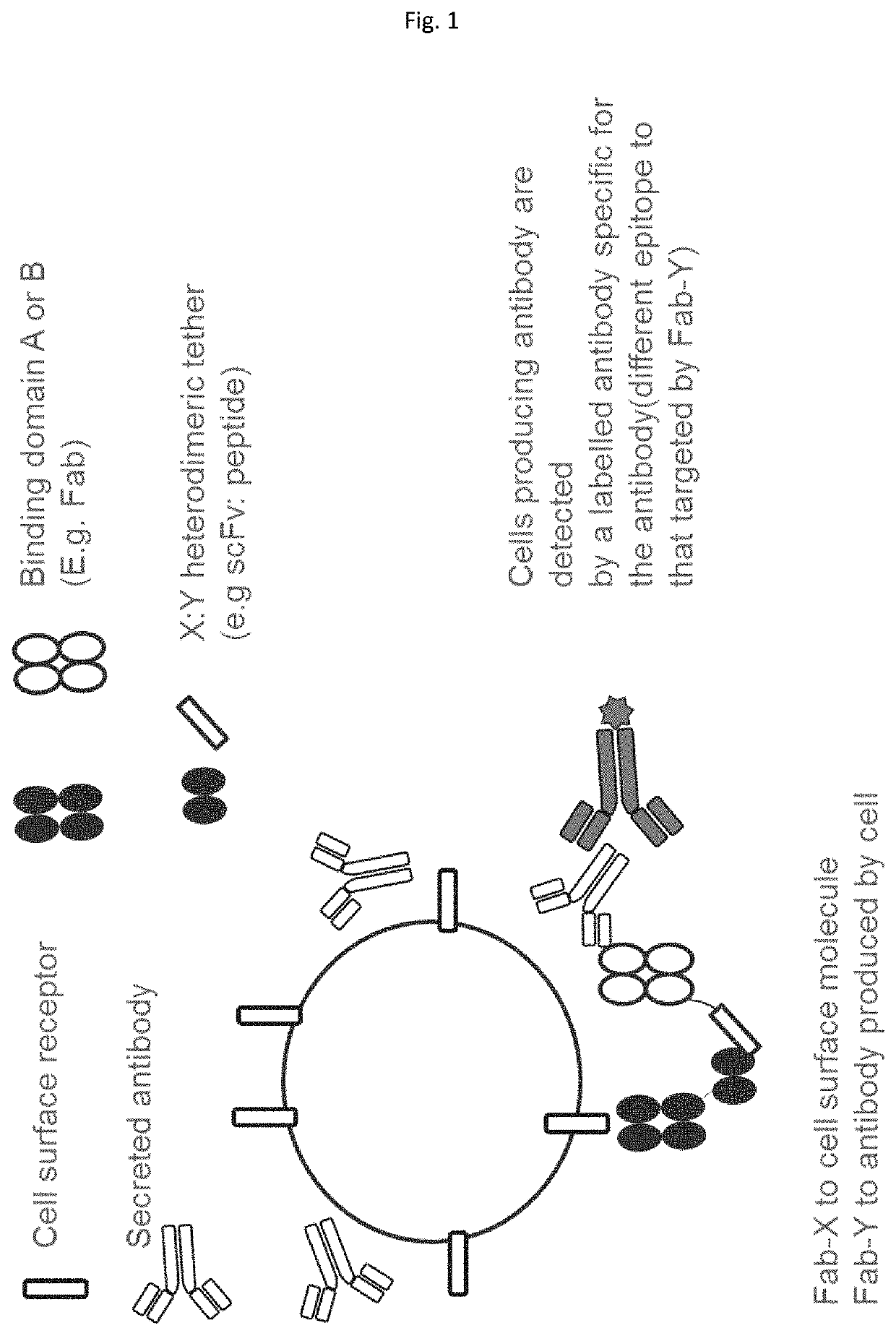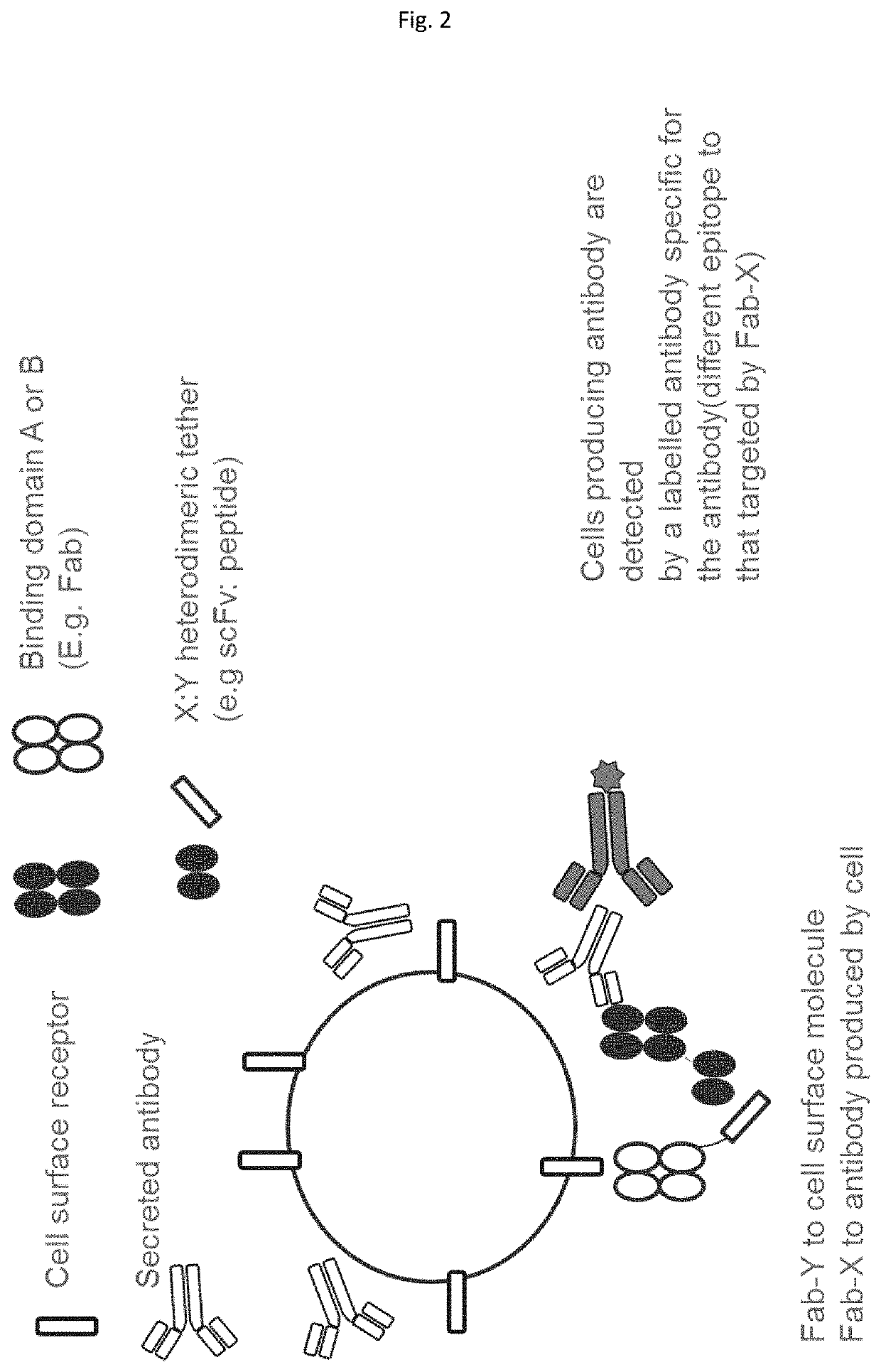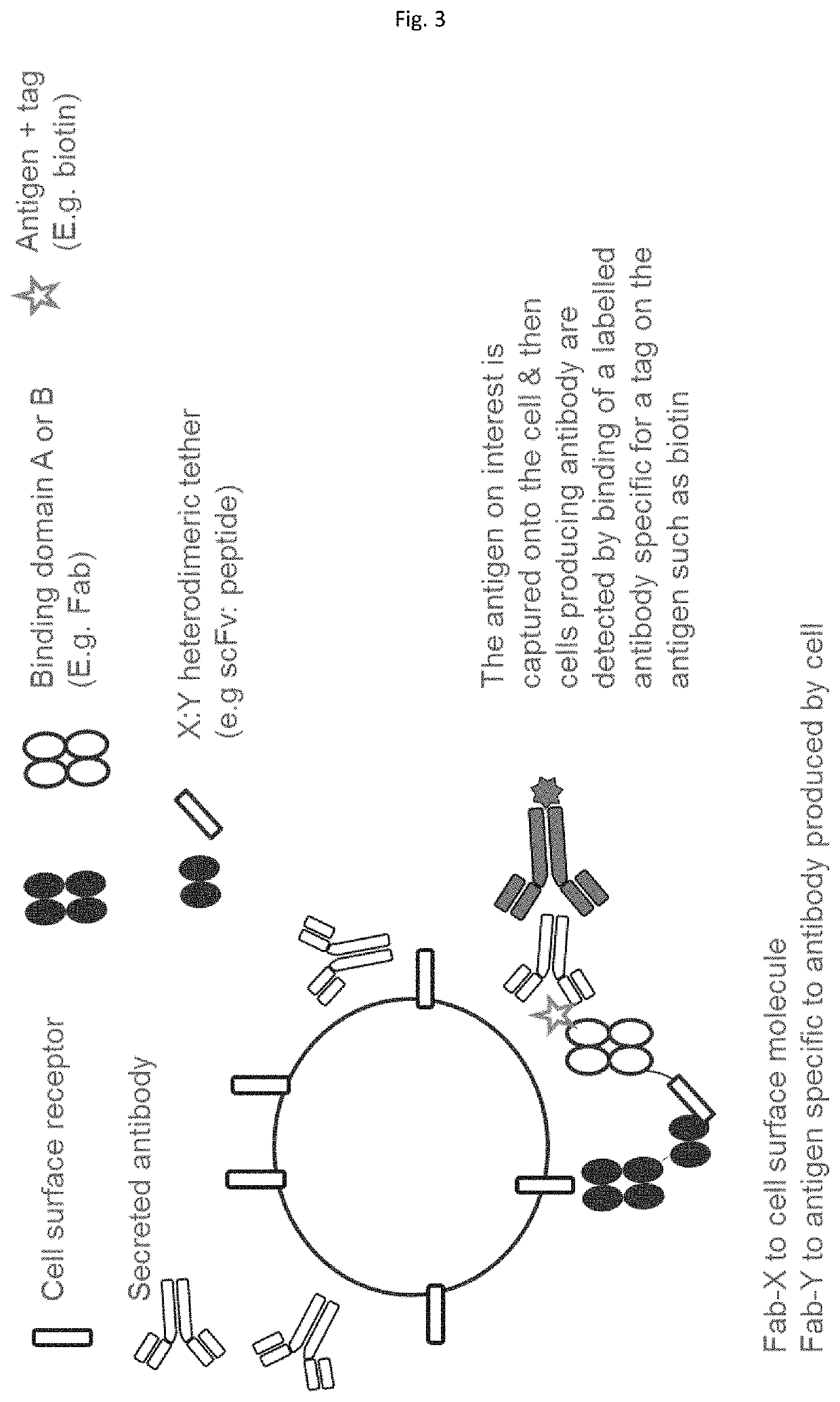Method employing bispecific antibodies
a technology of bispecific antibodies and antibodies, applied in the field of methods employing bispecific antibodies, can solve the problems of time-consuming and laborious preparation of known (traditional) multispecific formats, and the subsequent expression effort quickly becomes a significant practical bottleneck
- Summary
- Abstract
- Description
- Claims
- Application Information
AI Technical Summary
Benefits of technology
Problems solved by technology
Method used
Image
Examples
example 1
Construction of a Bispecific Antibody Complex of the Present Disclosure FabB-GCN4(7P14P):52SR4-FabA
[0430]FIGS. 10 and 11 show a representative bispecific antibody complex of the present disclosure. The bispecific antibody complex is composed of a first and second fusion protein. The first fusion protein (A-X) includes a Fab fragment (Fab A (also referred to as Fab #1) with specificity to soluble antigen IL-6, which is attached to X a scFv (clone 52SR4 SEQ ID NO: 3) via a peptide linker ASGGGG SEQ ID NO: 71 which is linked to the c-terminal of the CH1 domain of the Fab fragment and the VL domain of the scFv. The scFv itself also contains a peptide linker located in between its VL and VH domains.
[0431]The second fusion protein (B-Y) includes a Fab fragment (Fab B [also referred to as Fab #2] with specificity to cell surface antigen CD3). However, in comparison to the first protein, the Fab fragment is attached to Y a peptide GCN4 (clone 7P14P SEQ ID NO: 1) via a peptide linker ASGGG S...
example 2
metry Demonstration of scFv:Peptide Interaction Forming a Non-Covalent Bispecific Antibody that can Co-Engage a Cell Surface and a Soluble Antigen Simultaneously
[0440]FIG. 12 shows the results of a flow cytometry experiment which demonstrates the antigen specificities of two different bispecific antibody complexes formed using the scFv:peptide binding interaction.
[0441]The first bispecific antibody complex was constructed using the following two fusion proteins:[0442]1. Anti-CD3 Fab-scFv (52SR4); and[0443]2. Anti-antigen IL-6 Fab-peptide (GCN4)
[0444]The second bispecific antibody complex was constructed using the following two fusion proteins:[0445]1. Anti-CD3 Fab-peptide (GCN4); and[0446]2. Anti-antigen IL-6 Fab-scFv (52SR4)
[0447]Therefore, the two bispecific antibody complexes had the same Fab fragments and same binding partners (i.e. 52SR4 and GCN4). The difference between the two bispecific antibody complexes was in which Fab fragment is attached to which binding partner.
[0448]T...
example 3
emonstration of scFv:Peptide Interaction
[0455]FIG. 13 shows a surface plasmon resonance trace which demonstrates the affinity of the scFv:peptide (i.e. 52SR4:GCN4) interaction. Surface plasmon resonance was performed using a Biacore 3000 (GE Healthcare). All experiments were performed at 25° C. Streptavidin (produced in-house) was immobilised on a CM5 Sensor Chip (GE Healthcare) via amine coupling chemistry to a final level of approximately 1750 response units. HBS-N buffer (10 mM HEPES pH 7.4, 0.15M NaCl; GE Healthcare) was used as the running buffer for immobilisation and peptide capture. A 5 μl injection of Biotin-GCN4 peptide in HBS-N (10 nM, M.W. 4360) was used to achieve approximately 6RU of capture on the immobilised streptavidin. The running buffer was switched to HBS-EP+ buffer (10 mM HEPES pH 7.4, 0.15M NaCl, 3 mM EDTA, 0.05% (v / v) surfactant P20; GE Healthcare) for measuring anti-GCN4 (52SR4) scFv binding kinetics. Three-fold serial dilutions of Fab-scFv (generated in-hou...
PUM
| Property | Measurement | Unit |
|---|---|---|
| time | aaaaa | aaaaa |
| concentration | aaaaa | aaaaa |
| concentration | aaaaa | aaaaa |
Abstract
Description
Claims
Application Information
 Login to View More
Login to View More - R&D
- Intellectual Property
- Life Sciences
- Materials
- Tech Scout
- Unparalleled Data Quality
- Higher Quality Content
- 60% Fewer Hallucinations
Browse by: Latest US Patents, China's latest patents, Technical Efficacy Thesaurus, Application Domain, Technology Topic, Popular Technical Reports.
© 2025 PatSnap. All rights reserved.Legal|Privacy policy|Modern Slavery Act Transparency Statement|Sitemap|About US| Contact US: help@patsnap.com



